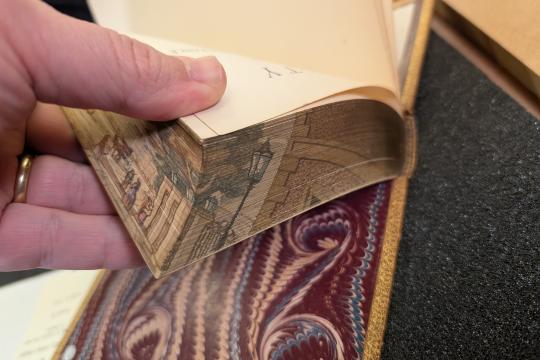Latest Post

W&M Libraries has the largest collection of fore-edge paintings in the country
Posted December 5, 2025
Deep in Special Collections, hundreds of books reveal their beauty with a simple touch. This collection of fore-edge paintings is the largest of its kind in the United States, containing 712 books whose artwork is painted not on the page, but on the edges of the pages themselves.





















